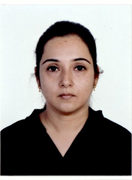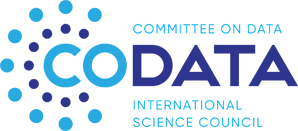Earth and Space Science Data Interoperability
With the development of science and technology, intensity of geoscience data accumulation increases. It causes difficulties in the exchange of geophysical knowledge between researchers and users. Implementation of modern and efficient geoinformation technologies can simplify the process of geodata management, analysis and exchange. It also provides quick and efficient solutions of a vast majority of specific tasks. Another key issue is the modern trend for multidisciplinary approach to data analysis. Geoscience data, reflecting the condition of physical parameters of the Earth, are usually grouped according to data sources and stored in different data centers.
The main objective of the TG is promotion and intensification of Earth science data, including open data and big data, exchange, integration, accumulation, and intellectual analysis. The TG is aimed to provide modern and open data access standards and tools in order to facilitate inter-operability of geoscience data. This includes consolidation of information links between CODATA, ICSU WDS and geoscience data centres, especially on geomagnetism and geoinformatics. The TG also focuses on the interoperability of geophysical data on the Earth’s magnetic field, obtained at ground observatories of the INTERMAGNET network and satellite data of the ESA Swarm mission. The TG promotes intellectual services for processing and analysis of vast volumes of geoscience data. The specified task lie within the modern concept of big data, which consists of four Vs: Volume, Variety, Velocity and Veracity.
The activity of the TG is focused on the following issues:
- development and data filling of the multidisciplinary GIS for geoscience data with sophisticated tools for data analysis;
- scientific and methodological contribution to extension of network of high quality geomagnetic observations in Eurasia.
- promotion of the Second edition of the comprehensive Atlas of the Earth’s Magnetic Field;
- development of new technologies and data products for visualization of multidisciplinary geoscience data with a projection system with a spherical display.
Task Group Outputs
- Organization of the International Conference in St. Petersburg in Russia, in October 2017. Organization of thematic workshops on the CODATA activities in the framework of the Conference.
- TG working meeting on the occasion of the 13th IAGA Scientific Assembly, Cape Town, South Africa
- Publication of a detailed manual for geomagnetic observatory operators (electronic publication).
- Renewed version of the web portal of the Inter-regional Geomagnetic Data Center (http://geomag.gcras.ru/).
- Renewed version of the geoportal of the analytical GIS (http://gis.gcras.ru/).
- Development of new geoscience data products for digital projection systems with a spherical display.
- Digital data arrays underlying the second edition of the Atlas of the Earth’s Magnetic Field.
Task Group Activities
- Operation of a new geomagnetic observatory of the INTERMAGNET standard in Russia – 07/2017
- TG working meeting on the occasion of the 13th IAGA Scientific Assembly, Cape Town, South Africa – 08/2017
- International CODATA Eurasia Conference on geoscience data management, St. Petersburg, Russia – 10/2017
- Data Citation Workshop on the occasion of the International Conference in St. Petersburg, Russia – 10/2017
- Launch of the English version of the analytical GIS Web portal – 11/2017
- Compilation of the Second Edition of the Atlas – 04/2018
Co-Chairs
| Anatoly Soloviev
Geophysical Centre of the Russian Academy of Sciences (GCRAS), 3, Molodezhnaya Str., 119296 Moscow, Russia a.soloviev (at) gcras.ru |
 |
| Dr. Masahito Nosé
Data Analysis Centre for Geomagnetism and Space Magnetism, Graduate School of Science, Kyoto University nose (at) kugi.kyoto-u.ac.jp Ph.D. received from Graduate School of Science, Kyoto University in 1998. Postdoctoral fellow for 1998-2001 at The Johns Hopkins University Applied Physics Laboratory. Assistant Professor since 2001. Main research interests include geomagnetic variations, pulsations, dynamics of energetic particles in the inner magnetosphere, substorm, and geomagnetic indices. |
 |
| Dr. Kusumita Arora
National Geophysical Research Institute of Council of Scientific & Industrial Research karora (at) ngri.res.in Kusumita Arora is a geophysicist with the CSIR-NGRI for the past thirteen years and has gained experience in the use of potential field methods to investigate the structure and processes of the Earth. She was graduate and post graduate from the Indian Institute of Technology, Kharagpur and subsequently completed her Ph.D. in Osmania University, Hyderabad. During her career she has worked in several team projects viz. Gravity Map Series of India, projects sponsored by OIL, ONGC, etc. More recently she has been closely involved with the compilation of the Encyclopedia of Solid Earth Geophysics (ESEG) as an Editorial team member. She became the Head of the INTERMAGNET Observatory HYB in NGRI Campus in 2009. She is actively pursuing new projects in the A&N and Lakshadweep Islands as well as the south coast of India. |
 |
Executive Committee Liaison
John BROOME (Canada)
Treasurer 2012-2016
Contact Details: john-br(at)rogers.com
